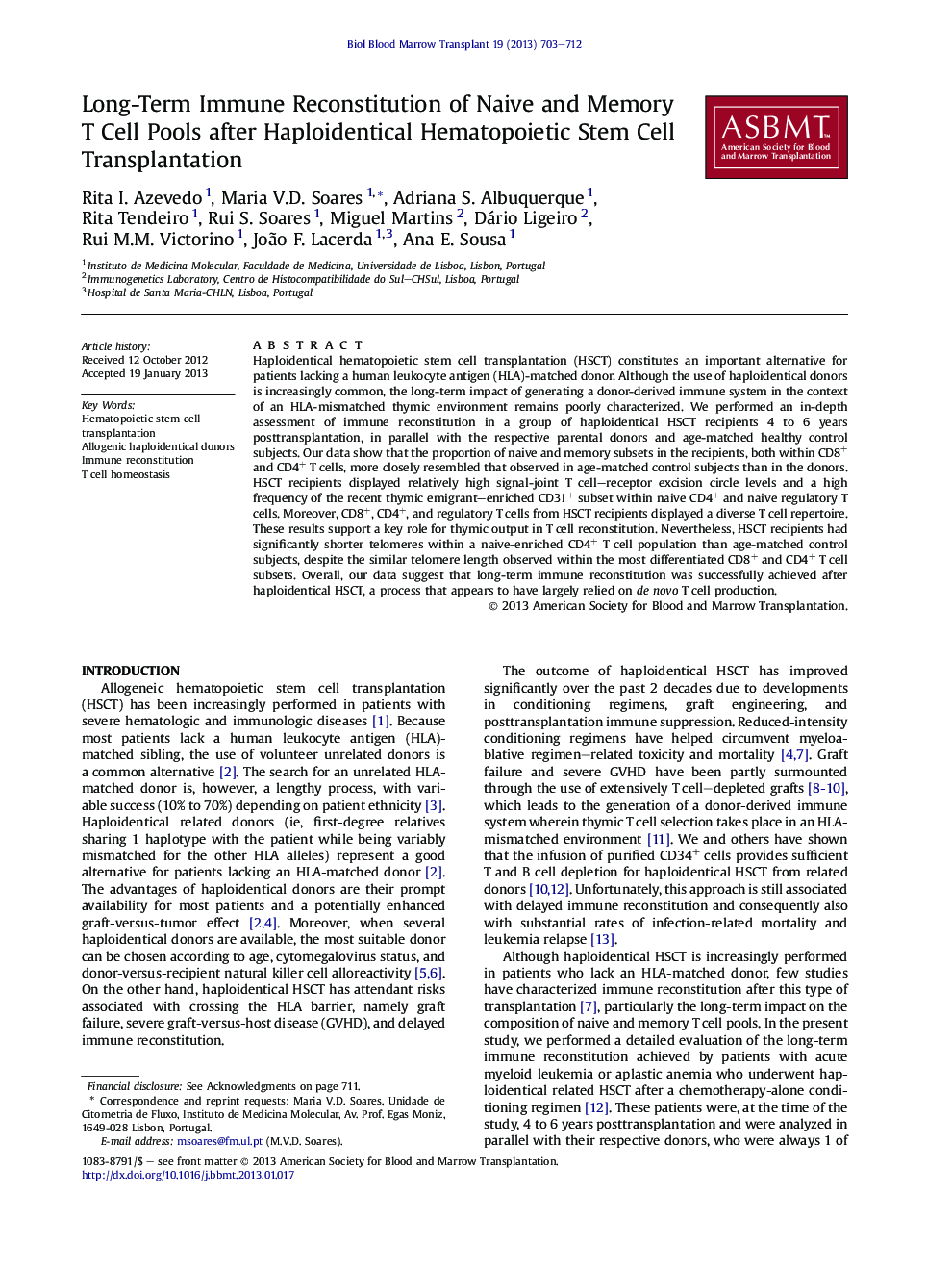| کد مقاله | کد نشریه | سال انتشار | مقاله انگلیسی | نسخه تمام متن |
|---|---|---|---|---|
| 2102771 | 1546293 | 2013 | 10 صفحه PDF | دانلود رایگان |

Haploidentical hematopoietic stem cell transplantation (HSCT) constitutes an important alternative for patients lacking a human leukocyte antigen (HLA)-matched donor. Although the use of haploidentical donors is increasingly common, the long-term impact of generating a donor-derived immune system in the context of an HLA-mismatched thymic environment remains poorly characterized. We performed an in-depth assessment of immune reconstitution in a group of haploidentical HSCT recipients 4 to 6 years posttransplantation, in parallel with the respective parental donors and age-matched healthy control subjects. Our data show that the proportion of naive and memory subsets in the recipients, both within CD8+ and CD4+ T cells, more closely resembled that observed in age-matched control subjects than in the donors. HSCT recipients displayed relatively high signal-joint T cell–receptor excision circle levels and a high frequency of the recent thymic emigrant–enriched CD31+ subset within naive CD4+ and naive regulatory T cells. Moreover, CD8+, CD4+, and regulatory T cells from HSCT recipients displayed a diverse T cell repertoire. These results support a key role for thymic output in T cell reconstitution. Nevertheless, HSCT recipients had significantly shorter telomeres within a naive-enriched CD4+ T cell population than age-matched control subjects, despite the similar telomere length observed within the most differentiated CD8+ and CD4+ T cell subsets. Overall, our data suggest that long-term immune reconstitution was successfully achieved after haploidentical HSCT, a process that appears to have largely relied on de novo T cell production.
Journal: - Volume 19, Issue 5, May 2013, Pages 703–712